Tired of quinoa? 5 other whole grains you’ll love
Learn about farro, millet, and more fiber-rich, good-for-you grains you should be eating.
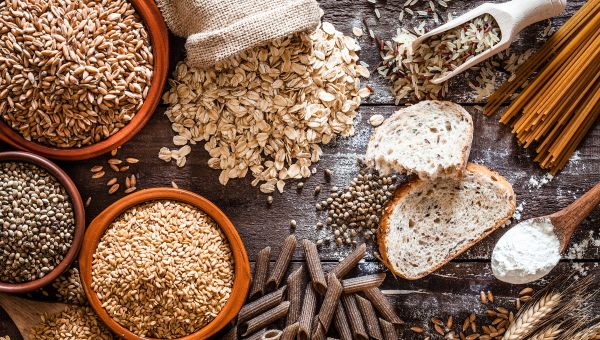
Whole grains are widely recommended as part of a nutritious diet. Yet, many people aren’t exactly sure what whole grains are, and why these good carbs are essential for overall well-being.
Simply put, whole grains comprise the entire grain kernel: the bran, germ, and endosperm.
“Whole grains are seeds, usually from certain grasses, and their grains contain vitamins, minerals, and fiber while having no cholesterol and being low in fat,” says certified nutritionist Kimberly Snyder co-author of Radical Beauty: How to Transform Yourself From The Inside Out with Deepak Chopra, MD.
Common varieties include whole-wheat flour, oatmeal, cornmeal, and brown rice, though there are many different types. Read on to learn about those lesser-known whole grains and how adding them to an overall nutritious eating plan can improve your health.
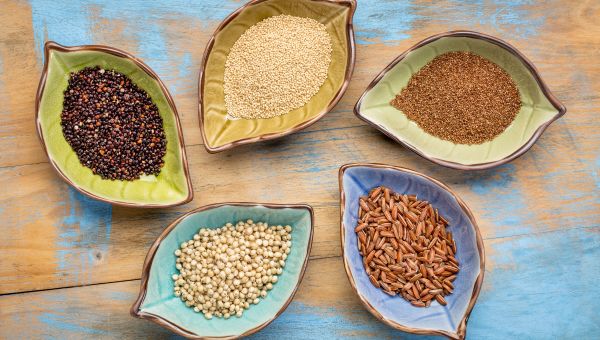
A Grain Above the Rest
Whole grains have been linked to numerous health benefits. For one, eating a healthy diet that incorporates whole grains can help reduce heart disease risk, as well as the risk for several medical conditions:
- A 2022 BioMed Central study of more than 9,400 adults showed that eating a diet high in whole grains (except popcorn) was significantly associated with a lower risk of coronary heart disease, which develops when arteries cannot deliver enough blood to the heart.
- A 2020 meta-analysis in the journal Nutrients found that whole-grain intake was linked to a reduced risk of colorectal, gastric, pancreatic, and esophageal cancers, plus mortality from most causes, excluding prostate cancer.
- A 2022 study in the International Journal of Environmental Research and Public Health concluded that whole grains offer protection against diabetes, cardiovascular disease, and obesity.
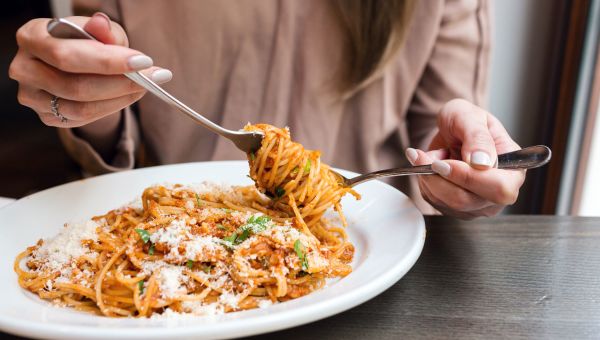
Why You Should Limit or Avoid Refined Grains
Unlike whole grains, refined grains such as white pasta, white bread, and white rice have been milled. This process removes the bran and germ to prolong shelf life—and also removes most of the grain’s nutrients. These include B vitamins like niacin and folic acid, as well as vitamin E, fiber, minerals, and phytochemicals, explains Snyder. Just the carbohydrates and protein from the endosperm are left for consumption. The result is empty calories and fewer health benefits.

Your Daily Grain Intake
It’s recommended that half the grains you eat each day are whole grains. But when it comes to the total number of whole grains you should consume daily, the answer is: It depends.
“There is no specific one-size-fits-all recommendation as everyone’s body, genetic profile, and constitution, and activity levels are different,” says Snyder.
“I personally eat whole grains every day—I feel energized from them and I easily maintain my weight,” adds Snyder. “However, I also don’t eat large amounts of fat with them. Experiment with your own body to see the right amount for you.”

Quinoa
One of Snyder’s favorite whole grains is quinoa, even though it’s actually a seed. Boasting more than 120 varieties in multiple colors, this gluten-free, high-protein food has a slightly nutty flavor and a similar texture to couscous. Quinoa flakes and quinoa flour can be found in many grocery stores, as well. Compared to other grains, quinoa has relatively high levels of all nine essential amino acids.
“One of the reasons I absolutely love quinoa is how you can toss it into just about anything,” says Snyder. “It’s super easy to make and picks up the flavors of any dressing and seasonings.”
Looking for a protein-packed salad option that promises to leave you full and satisfied? Try Snyder’s Quinoa, Kale and Tomato Salad recipe.

Bulgur
This affordable, quick-cooking grain derives from kernels of wheat that have been pre-cooked and broken into tiny pieces. Bulgur is also high in fiber, rich in iron, and loaded with the mineral phosphorus, which plays a vital role in several biological processes, including bone mineralization and energy production. Bulgur contains magnesium, as well, which helps regulate multiple functions in the body, such as blood pressure, blood glucose, and nerve function.
For a hearty salad with Middle Eastern flavor, try this recipe for Bulgur Salad with Green Lentils and Walnuts.

Millet
According to the Whole Grains Council, millet is the world’s sixth most important grain. Not only is it versatile—it can be used in breakfast cereals and pilafs, popped like corn, and tossed into breads, stews, or salads—this mild-flavored, high-fiber grain is gluten-free and considered a healthy source of plant-based protein. It’s also packed with numerous minerals, such as magnesium and manganese, which helps promote antioxidant function, metabolism function, bone development and wound healing. Millet contains omega-fatty acids and vitamin B1, as well.
Looking to try out this versatile grain? Snyder recommends this recipe for a Greek-Inspired Millet Salad.
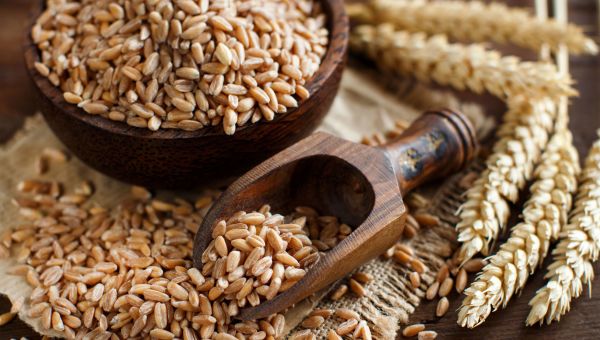
Farro
This hearty grain has been a favorite in Italy for centuries. Some believe it is the key ingredient for making the ideal pasta. Today, farro is added to soups, casseroles, salads, and pilafs and can be swapped for rice in risotto, thanks to its rich, nutty flavor. Nutritionally speaking, this complex carbohydrate provides protein, fiber, iron, and calcium.
Got about 30 minutes? Try creating this delicious recipe for Mediterranean Mussels With Farro and White Wine.
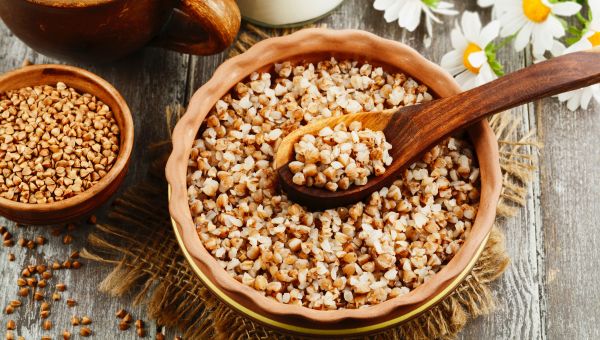
Buckwheat
This gluten-free, pyramid-shaped grain comes from a plant related to the rhubarb family that has been around for nearly 8,000 years. Buckwheat is a complete protein with a mild, nutty flavor that can be added to salads and soups, and used to make hot porridge, pilafs, casseroles, and any recipe that requires whole grains. It’s a key ingredient in traditional Eastern European dishes like kasha varnishkes and potato knishes.
If you’re eating on the go, Snyder’s recipe for Raw Sprouted Buckwheat Granola is a must have travel snack.
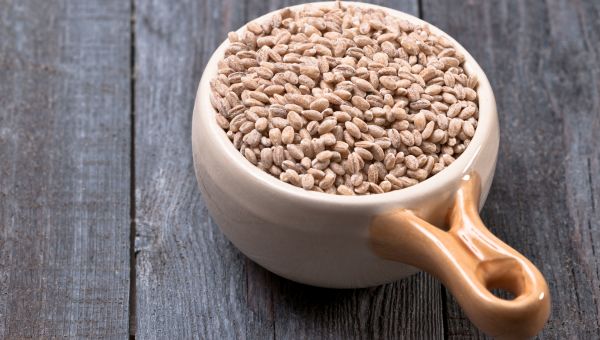
Wheat Berries
While the name makes them sound like small fruits, wheat berries are actually whole wheat kernels. A single, flavorful cup provides almost 30g of protein and 23g of fiber, along with vitamins (folate, choline, thiamin, and niacin) and minerals (potassium, phosphorus, manganese, and selenium). Hard red wheat berries can be enjoyed as a hot breakfast cereal, substituted for rice in various dishes, and milled into flour.
Try out these tasty kernels by whipping up this crowd-pleasing recipe for Roast Chicken With Fruit-Studded Wheat Berries.

Hu Y, Willett WC, Manson JAE, et al. Intake of whole grain foods and risk of coronary heart disease in US men and women. BMC Med. 2022 Jun 10;20(1):192.
Gaesser GA. Whole Grains, Refined Grains, and Cancer Risk: A Systematic Review of Meta-Analyses of Observational Studies. Nutrients. 2020 Dec 7;12(12):3756.
Khan J, Khan MZ, Ma Y, et al. Overview of the Composition of Whole Grains' Phenolic Acids and Dietary Fibre and Their Effect on Chronic Non-Communicable Diseases. International Journal of Environmental Research and Public Health. 2022 Mar 5;19(5):3042.
U.S. Department of Agriculture. Grains. MyPlate.gov is based on the Dietary Guidelines for Americans, 2020-2025. Accessed July 13, 2022.
Harvard TH Chan School of Public Health. Whole Grains. 2022. Accessed July 13, 2022.
NIH: Office of Dietary Supplements. Magnesium: Fact Sheet for Health Professionals. June 2, 2022. Accessed July 13, 2022.
NIH: Office of Dietary Supplements. Thiamin: Fact Sheet for Health Professionals. March 26, 2021. Accessed July 13, 2022.
Oldways Whole Grains Council. Buckwheat—December Grain of the Month. 2022. Accessed July 13, 2022.
Oldways Whole Grains Council. Millet and Teff—November Grains of the Month. 2022. Accessed July 13, 2022.
Oldways Whole Grains Council. Quinoa—March Grain of the Month. 2022. Accessed July 13, 2022.
Oldways Whole Grains Council. What’s a Whole Grain? A Refined Grain? 2022. Accessed July 13, 2022.
Oldways Whole Grains Council. Wheat—July Grain of the Month. 2022. Accessed July 13, 2022.
Oldways Whole Grains Council. Whole Grains A to Z. 2022. Accessed July 13, 2022.
Oregon State University. Magnesium. 2022. Accessed July 13, 2022.
Oregon State University. Manganese. 2022. Accessed July 13, 2022.
Oregon State University. Phosphorus. 2022. Accessed July 13, 2022.
More On


video

article

slideshow


video


video
